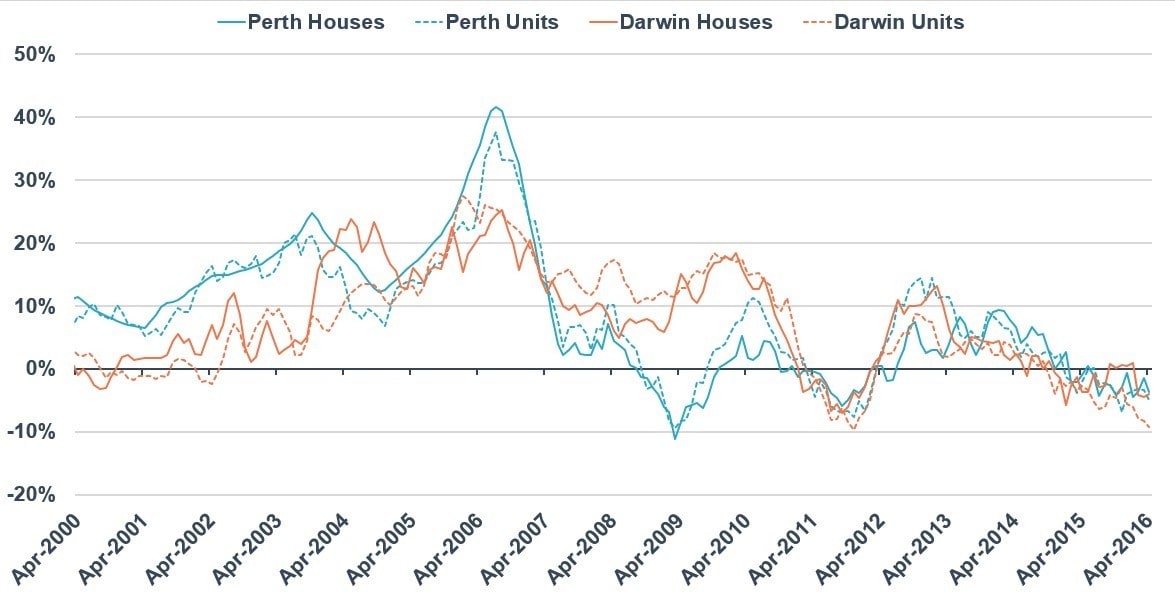Value declines in resource regions show signs of easing: Eliza Owen

GUEST OBSERVER
In the resource regions – Western Australia and the Northern Territory – property values continue to fall.
Even though quarterly growth continues to be in negative territory in the Perth and Darwin house markets, the figures were slightly better in the April quarter compared to the March quarter, suggesting an ease in the fall of growth. Annual growth for these markets is presented in Graph 3.
Graph 3: Annual Growth Rates – Perth and Darwin

Source: Residex
The graph shows that property values have been falling in these areas throughout much of 2015 up to today. It has been established that movements in commodities can be closely tied to economic and housing market performance in WA and the NT. Despite a small rally in the commodity price index in the first quarter of 2016, iron ore is still less than one third of what it was worth when it peaked at US$180 in February 2011.
Additionally, profits from the mining sector are not as widely spread throughout the states, as the operational phase of the mining boom employs less labour than the construction period. Interestingly, it seems that the Queensland labour market is suffering a higher unemployment rate (6.5%) in response to mining divestment. This could be because of the tighter labour markets in WA and the NT, where workers have higher mobility in response to mining and construction projects.
Across the country, the transition from the mining to service industries is overstated in its ability to absorb lost jobs and income. The official Australian unemployment rate was 5.7% in April (seasonally adjusted), unchanged from the previous month. However, April saw the loss of 9,300 full time jobs and an increase in 20,000 part time positions. Despite the official statistics, employment is being picked up through more precarious work.
Given that part time and casual work has been linked to reduced bargaining power for pay increases, it is no surprise that increases in Australia’s annual wage growth reached a historic low of 2.1% in the March quarter. Low wages may also be contributing to low inflation, which is in turn fuelling expectations of further cash rate cuts this year.
Moving forward, I would expect modest falls in house values in the major east coast cities, while units and resource market dwellings adjust to changed conditions in demand. Low interest rates and falling dwelling prices may present opportunity in certain markets across the country, but purchasers should look for strong and diverse economic fundamentals in the markets they choose to buy in.
Eliza Owen is the market analyst for Onthehouse.com.au. She can be contacted here.